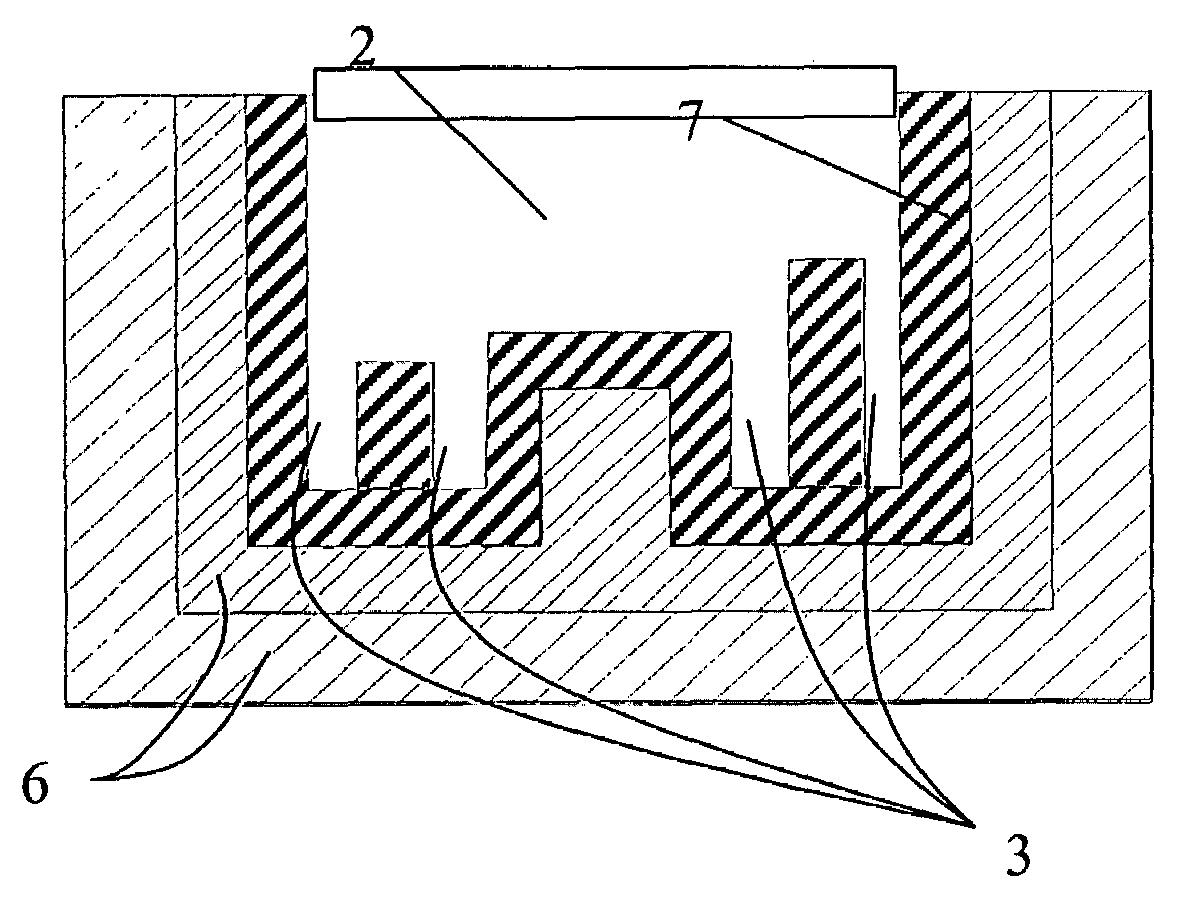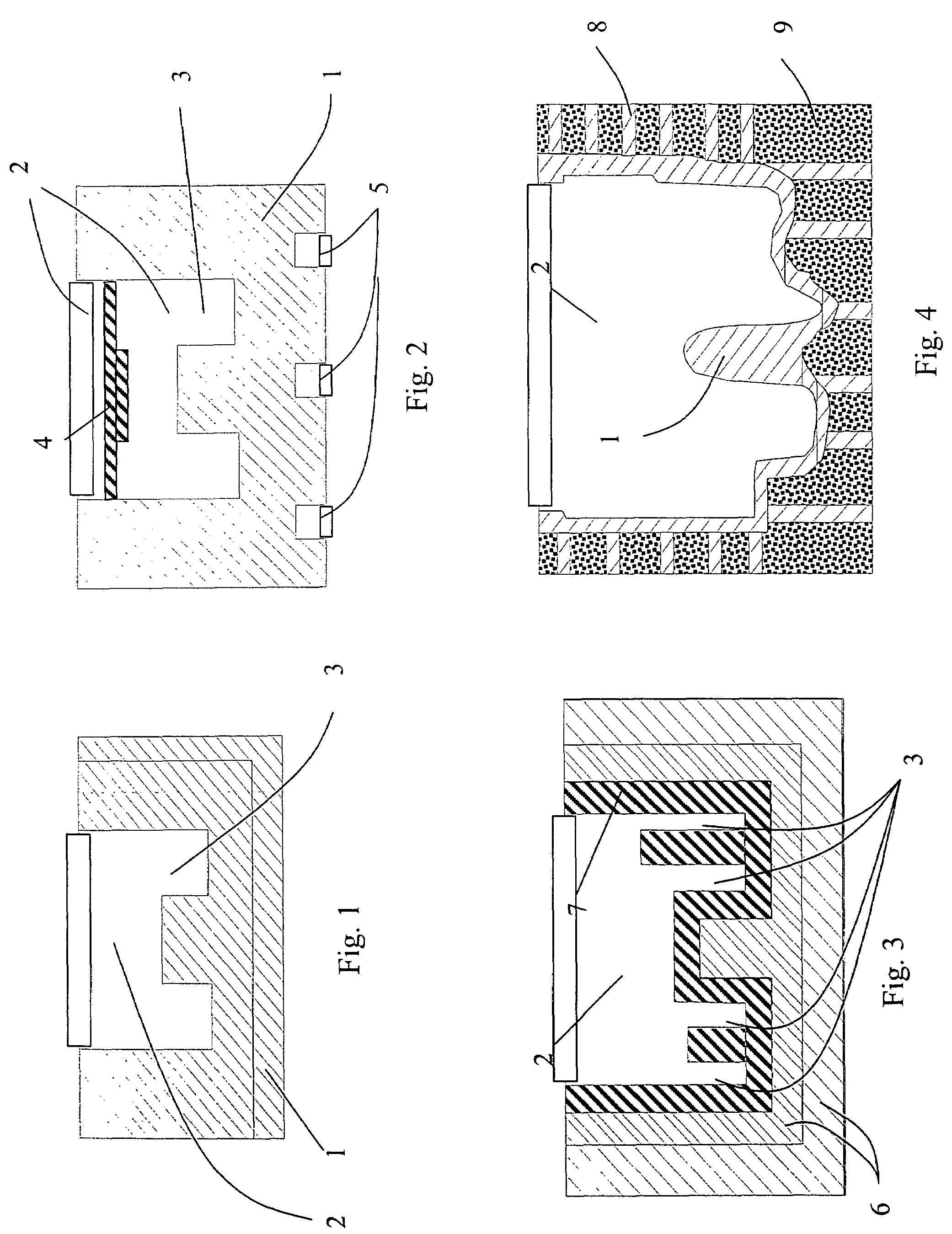Ceramic casting mold for casting metal and process for production thereof
- Summary
- Abstract
- Description
- Claims
- Application Information
AI Technical Summary
Benefits of technology
Problems solved by technology
Method used
Image
Examples
Embodiment Construction
[0059]Although the generative RP-processes are particularly suitable for the integral production of even complex casting mold geometries, it is not outside the scope of the invention that the casting mold contain additional parts, for example, support or reinforcing or coating or casing parts (in the following also referred to as mold shell), which are produced by another process.
[0060]In accordance with the invention the mold insert (7), in particular the mold part with the highest geometric requirements, is produced by generative RP-processes (see FIG. 3). The shell (6) or, as the case may be, the reinforcing or casing part of the assembled casting mold, is preferably formed by more economical mold sand, for example quartz sand or zircon sand. The reduced dimensional trueness and casting surface quality in the area of the reinforcing and casing structures can generally be accepted without problem, since the highest quality requirements in the cast parts are as a rule limited to on...
PUM
| Property | Measurement | Unit |
|---|---|---|
| Temperature | aaaaa | aaaaa |
| Fraction | aaaaa | aaaaa |
| Length | aaaaa | aaaaa |
Abstract
Description
Claims
Application Information
 Login to view more
Login to view more - R&D Engineer
- R&D Manager
- IP Professional
- Industry Leading Data Capabilities
- Powerful AI technology
- Patent DNA Extraction
Browse by: Latest US Patents, China's latest patents, Technical Efficacy Thesaurus, Application Domain, Technology Topic.
© 2024 PatSnap. All rights reserved.Legal|Privacy policy|Modern Slavery Act Transparency Statement|Sitemap


